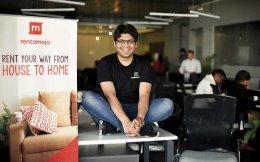The memories of strife between the multiplex owners and the producers last year had just begun to fade, and the multiplexes have made it to the news once again, albeit for a different reason. Last year, there was a relentless standoff between the producers and multiplex owners over revenue sharing which resulted in a strike that crippled the film industry for almost two long months. And now, there is a fierce tussle between two prominent multiplex brands, viz. Inox Leisure Limited (“Inox”) and Reliance Mediaworks Limited (“RML”) to acquire a third one, Fame India Limited (“Target Company” / “Fame”).
The battle for Fame, in less than two months has turned the multiplex industry into a battleground, packed with its fair share of controversies, mud-slinging, allegations, twists and oodles of competitive zeal. The idiosyncrasies of this deal, including - the promoters opting for a dramatically lesser price amongst the multiple offers on the table; a competitor making an open offer to acquire a company even after another competitor has acquired a controlling stake in it, etc.; make it a very interesting and fascinating case study.
\n
Further, just when one thought consolidation was the trend in the multiplex business with last year?s acquisition of DLF?s DT Cinemas by PVR, it appears that in the midst of scramble for Fame, the DLF deal also seems to be facing hiccups, thereby rocking the screen rankings once again.
\n
So, what makes Fame such a prized possession and why are Inox and RML fighting for Fame?
Fame with its 95 screens and presence in 12 cities is definitely a star attraction for any film exhibition business. It will add to their negotiating power, not only in the supply chain but rentals as well. It will increase their pricing influence vis-à-vis the patrons. Further, such acquisitions can also help exhibition companies control distribution territories and cut costs by achieving scale.
\n
For Inox, the deal is important, because the 95 screens that Fame owns will increase its total screen tally to 210, bringing it closer to the arch rival RML which currently is at the top position with 242 screens.T he deal will also dodder the screen rankings, raising Inox to the second spot and pushing PVR Cinemas, till now the second largest, to third position with 142 screens.
\n
In addition, it will strengthen its position in Maharashtra, where Fame has 46 screens and Inox has just 16, including Gujarat (Fame 19, Inox 7), West Bengal (Fame 30, Inox 10), Karnataka (Fame 9, Inox 8) and Jharkhand (Fame 4, Inox Nil).
\n
For, RML, which is already a leading player in the movie exhibition business in India with the largest number of operational movie screens across the country, this acquisition will consolidate its top position in the industry by scaling its total to a formidable 337, leaving PVR in second position, at 142, lagging far behind.
\n
Apart from the rankings and consolidation, there is another crucial aspect to the acquisition of Fame. The acquisition doesn’t just involve film exhibition business of Fame, but it brings along Fame?s film distribution subsidiary, Shringar Films Limited, and food courts and restaurant management subsidiary, Big Pictures Hospitality Services Private Limited. Add to that, with 50% stake of Fame in Headstrong Films Private Limited (a film production firm) and Swanston Multiplex Cinemas Private Limited (primarily engaged in managing a multiplex), this acquisition is a complete package.
\n
Why did the promoters of Fame choose a lesser price, when RML was willing to offer much more?
This is the question which still remains unanswered. The decision of Mr. Shravan Shroff, Mr. Shyam Shroff and Mr. Balkrishna Shroff (on behalf of South Yarra) to sell their 43.28% stake in Fame to Inox for Rs. 44 when RML had made a „firm offer? of Rs. 80 per share25 has perplexed everyone. Though, Fame?s managing director, Mr. Shravan Shroff, has denied RML making any written offer to him on a higher price,26 the Reliance Open Offer for 62.36% stake in Fame at a whopping price of Rs. 83.40 per share seems to suggest otherwise.
\n
Why were the promoters in such haste to sell off their stake, when they could have easily negotiated further? Why didn?t the promoters ask for a premium which is fairly common in a deal involving sale of controlling stake and settle for just Rs. 44 per share i.e. the prevailing market price at that time? Also, for a fee of Rs. 10 million, the Shroffs agreed not to compete with Inox in business of setting up and/or operating multiplex or cinema exhibition for a period of two years commencing from the date of completion of the Inox Open Offer formalities. These are some of the issues which render the decision questionable.
\n
Is the battle for Fame, a lost one for RML, or does it still have a chance to score on account of the FCCB issue?
The answer to this lies in the books of accounts of Fame. What may seem like a done deal prima facie, may not be that obvious if we look at it holistically. In April 2006, Fame had issued two series of Foreign Currency Convertible Bonds (“FCCBs”) (12,000 Series A Bonds and 8,000 Series B Bonds, of face value of $1,000 each) aggregating to $20 million. The FCCBs are convertible at any time upto April 12, 2011 at the option of the holders into newly issued’ ordinary equity shares bearing a face value of Rs. 10 per share at an initial conversion price of (i) Rs. 90 per share for Series A Bonds; and (ii) Rs. 107 per share for Series B Bonds.
\n
Though it is interesting to see, as RML is continuing its shopping spree acquiring Fame shares through open market purchases (from 4.65% before February 5, 2010 to 13.80% on March 8, 2010), Inox, which has already acquired 42.67% of the fully diluted stake in Fame and needs even less than 8% of the fully diluted stake in Fame to consolidate its position, seems to be holding at the moment. One reason for it could be Regulation 20(7) of the Takeover Code, which says that where the acquirer has acquired shares in the open market or through negotiation or otherwise, after the date of public announcement at a price higher than the offer price stated in the letter of offer, then, the highest price paid for such acquisition shall be payable for all acceptances received under the offer.
\n
With Fame share prices now touching Rs. 90 and above, acquisition of even a single share of Fame will considerably hike the Inox Offer Price. Another possible reason for this hold back could be that Inox does not want to enter into the aggressive bidding process so early in the race and may like to defer it further and bring in the late surprise.
\n
Great Offshore Limited (“GOL”) takeover could repeat again: In the takeover battle for GOL, ABG Shipyard Limited, realizing that its offer could not be a success, sold its stake in GOL just one day prior to the day open offer began and made huge profits. Similarly, Inox could also sell off its stake in Fame and reap hefty profits from the difference in prices.
\n
What impact does the bidding war have on the public shareholders of Fame?
Even before Reliance announced its competitive bid, owing to the widespread speculations in the market that Reliance would stake its counter-claim, the price of the shares of Fame has been sky-rocketing. From mid-January, 2010 when rumours of Inox acquiring Fame were up in the air, till the date the public announcement for counter-offer was made, the share prices of Fame have more than doubled from Rs. 38.40 per share to around Rs. 86.45 per share. On February 22, 2010, the day after Reliance Group announced its offer countering a bid by Inox, shares in Fame opened up 4.98% to Rs 86.45, hitting its upper circuit.29 Following is a chart showing the trend as to how the price of Fame shares has escalated in the past couple of weeks.
\n
Why was the Reliance Open Offer initially for 62.08% and later revised to 62.36% stake in Fame?
To answer this question, it is pertinent to note the shareholding of Inox Group in Fame at the time of making the acquisition and their offer size. The reason being, as per Regulation 25(3) of the Takeover Code, any competitive offer by an acquirer has to be for such number of shares which, when taken together with shares held by him along with persons acting in concert with him, will be at least equal to the holding of the first bidder (Inox Group, in the present case) including the number of shares for which the offer by the first bidder has been made.
\n
What began in 2005 with the acquisition of Adlabs by Reliance Group, and amalgamation of CCPL with Inox in 2006, seemed to have slowed down during the economic downturn. But, with the recession fading out gradually and markets picking up, mergers and acquisitions are gaining momentum once again. Last year in November, DLF, owner of DT Cinemas, agreed to sell their 29 screens to PVR Cinemas (the acquisition is yet to be completed) and early this year, we get to see a fierce battle between Inox and RML for the acquisition of Fame.
\n
Though, Inox has already acquired more than 50% stake in Fame, but RML doesn?t seem to be losing hope. From open market purchases and a Big? open offer with a „Big? price, to allegations claiming violation of hosts of laws, the Reliance Group is trying every tactic under the roof to frustrate the acquisition of Fame by Inox. Even, if it is not be able to acquire Fame, by getting hands on 26% shares in Fame, it will gather the power to block special resolutions, making life tougher for Inox.
\n
With the bouquet of benefits that Fame brings along with it in connection of its acquisition by Inox, and the growth plans of both Inox and Fame being tied up, Inox too doesn?t seem to let go of Fame that easy. It has denied all the allegations and insinuations made by RML in its public announcement as untrue, baseless and misleading. Amidst this scuffle, the debt of over Rs. 1000 million on the books of account of Fame, seems to have taken a backseat.
\n
In light of the cutthroat competitive zest which both the parties bear, it is difficult to be clairvoyant on way the battle is going to evolve. But one thing is for sure, with both the parties trying to become market leaders in this business, the battle is bound to get fiercer and murkier in the time to come. Only time will be able to tell which party will trounce the other and enter the “Hall of Fame”.





